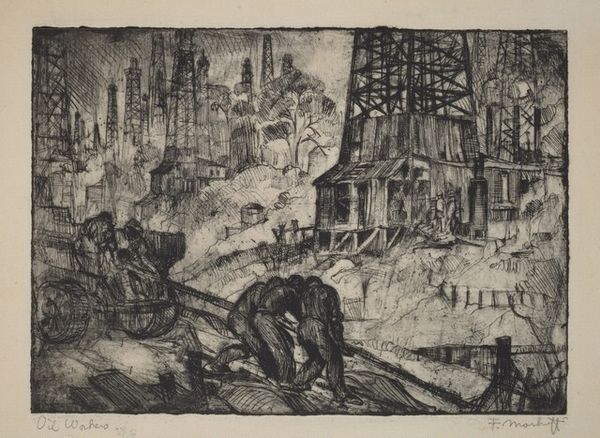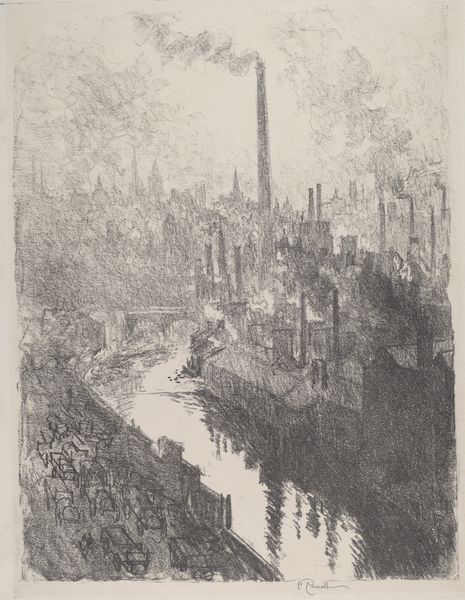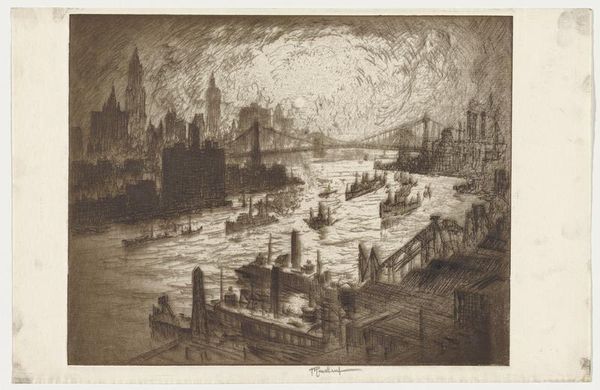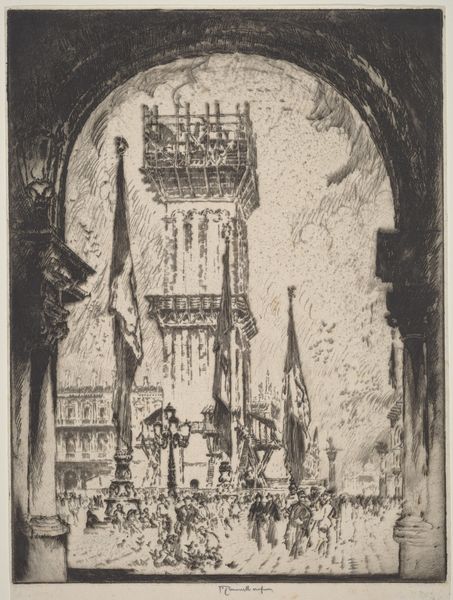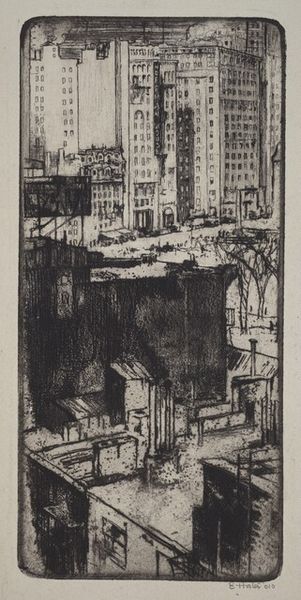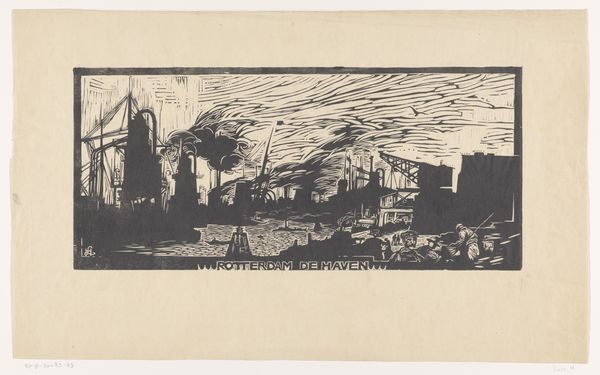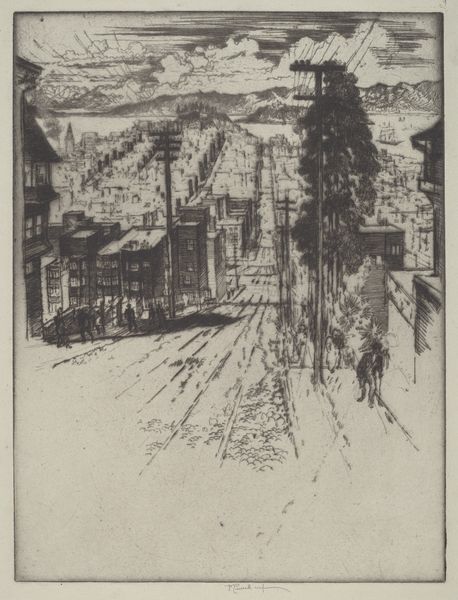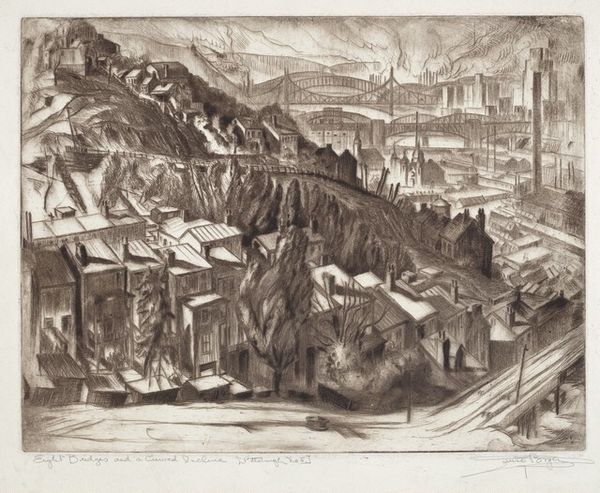
print, etching
#
pencil drawn
# print
#
etching
#
united-states
#
cityscape
#
realism
Dimensions: 12 3/8 x 9 5/16 in. (31.43 x 23.65 cm) (plate)16 7/16 x 11 3/8 in. (41.75 x 28.89 cm) (sheet)
Copyright: No Copyright - United States
Editor: This is Joseph Pennell's etching "The Great Stack," created in 1909. The buildings and smokestacks reaching for the sky make the city feel so imposing and powerful, almost suffocating. What do you see in this piece? Curator: What strikes me is the glorification of industry, set against what we know today about its human and environmental cost. The dense, almost suffocating composition can be read as a visual representation of industrial pollution and its impact on urban communities. Pennell's romantic portrayal masks a reality of worker exploitation and environmental degradation. How do you think viewers at the time would have perceived this work compared to our contemporary understanding? Editor: That's a really interesting point. Maybe back then, it was more about progress and growth, less about the human cost? I hadn't really thought about it that way. Curator: Exactly. The absence of people in the landscape, save perhaps as cogs within this "great stack", invites reflection upon the priorities being represented. It's a powerful reminder that artistic expression doesn't exist in a vacuum; it’s tied to the sociopolitical narratives of its time. Thinking about it this way, does that shift your perspective on the "power" you felt earlier? Editor: Absolutely. It makes me think about whose power is being celebrated here, and who is being exploited to build it. It adds a whole new layer of meaning. Curator: Precisely. Recognizing art's complicity in broader power dynamics opens up critical dialogues. I am grateful for your insight! Editor: Thanks for helping me to consider a different perspective. I will be sure to examine historical context to enrich my viewing in the future.
Comments
No comments
Be the first to comment and join the conversation on the ultimate creative platform.
